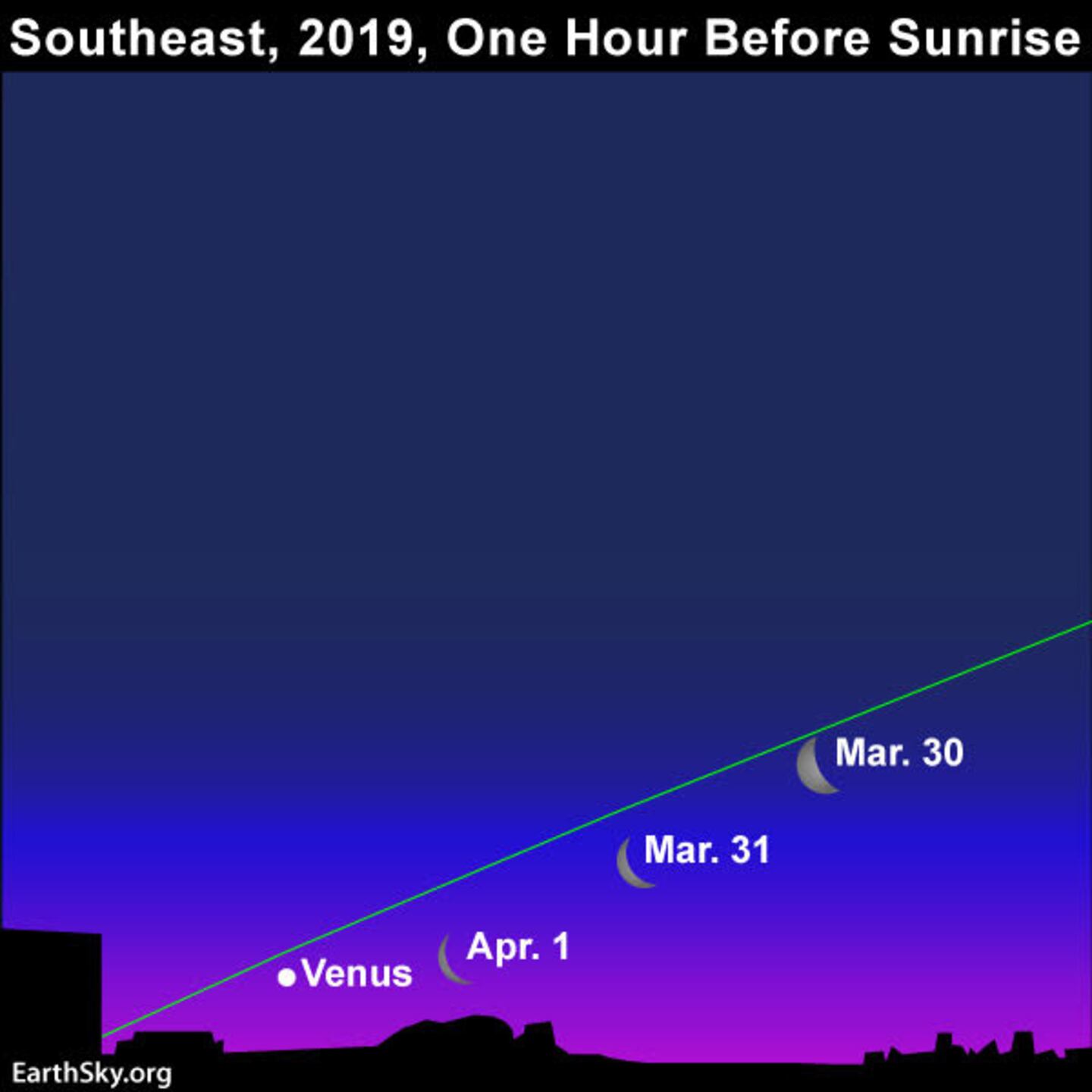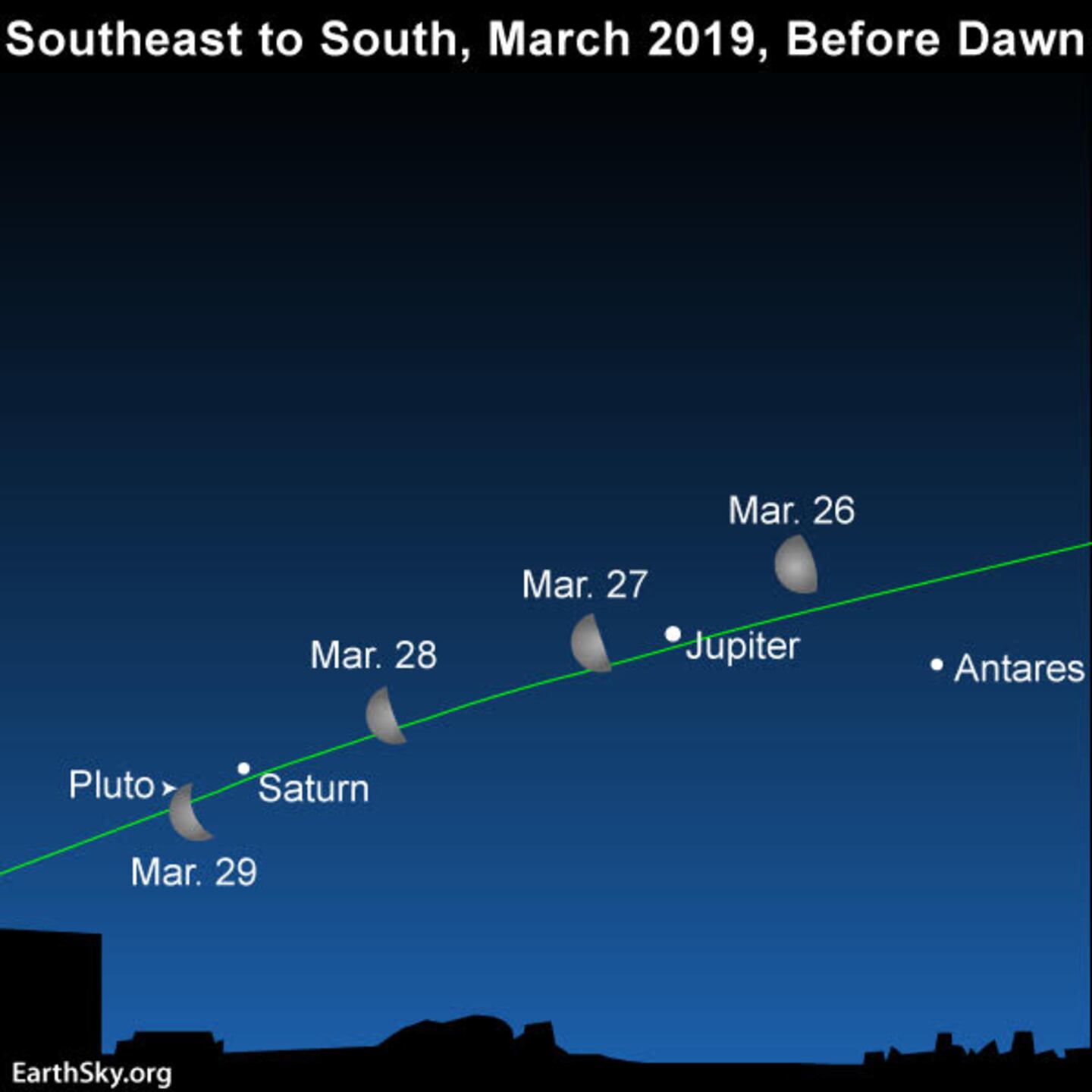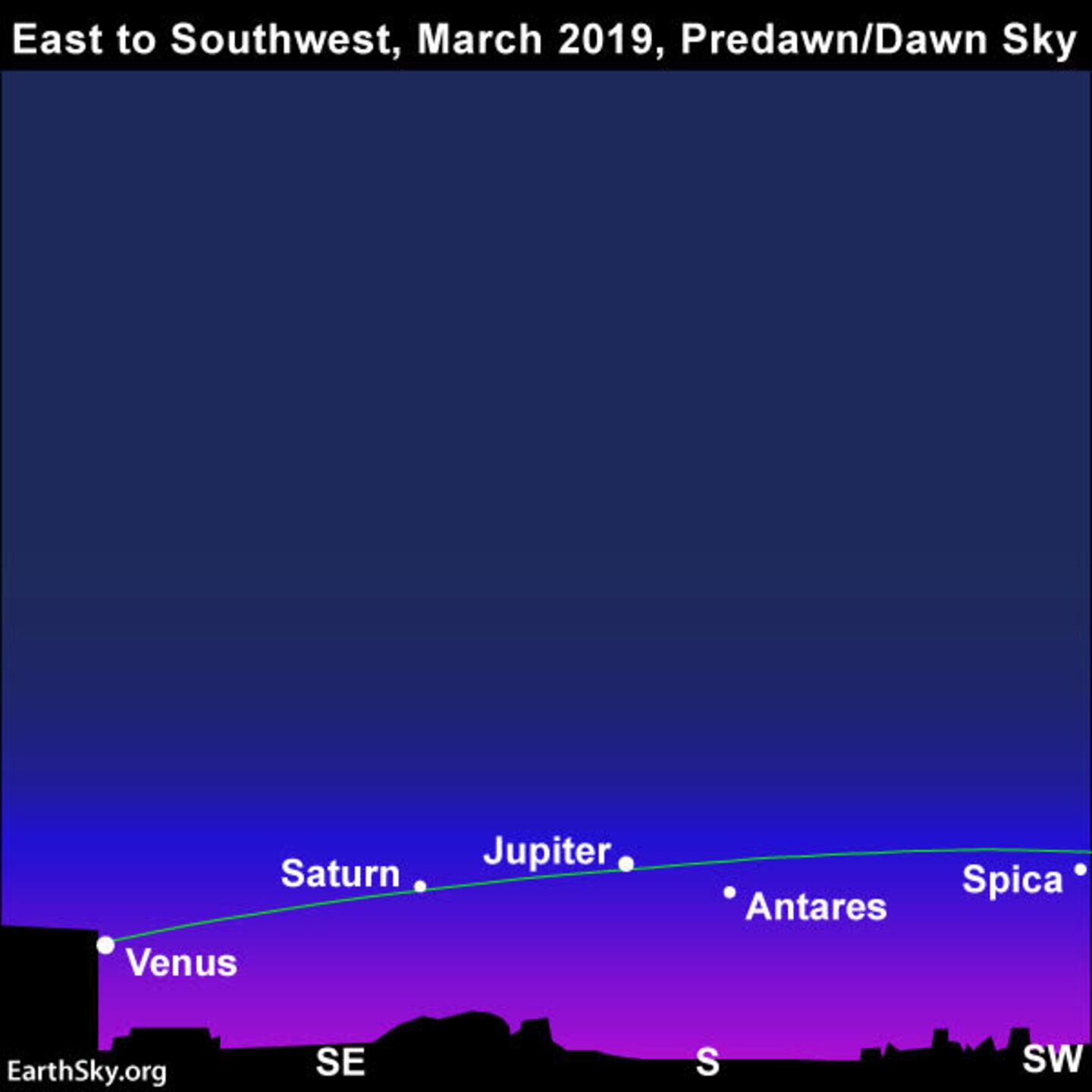Five bright planets make bright appearances in the sky during the month of March: Mercury, Venus, Mars, Jupiter, and Saturn. A "bright planet" is any planet easily visible without help, per EarthSky. And wouldn't you know - they appear bright. Sounds about right...They are usually easy to find and the light is steady, unlike stars which flicker sometimes.
MERCURY is the closest bright planet to the brightest object in the sky: the sun. Mercury is visible in the western sky near sunset, but by late March, it becomes washed out by the sun itself. Mercury will be present in the morning sky starting in April.
Viewing Time: Evening then Morning
VENUS is visible in the pre-dawn sky all month long. Just look east and it's the brightest object you can see. That's not the moon, of course. As we roll throughout the month, Venus spends less and less time in the predawn sky. By the end of March and the beginning of April, the Crescent Moon is your guide to finding Venus:
Photo courtesy EarthSky.org. Venus rises two hours before sunrise at the beginning of March, and 30 minutes earlier than that by the end of the month.
Viewing Time: Morning
MARS is visible in the evening sky all month long. The moon moves very close to Mars during the evenings of March 10 & 11. Later in the month, the Pleiades will be your guide to seeing the Red Planet. The Pleiades can be seen without binoculars but they may help.
Photo courtesy EarthSky.org. Mid-March, Mars moves near the moon at nightfall. It also flanks Aldebaran, the brightest star in the constellation Taurus.
Viewing Time: Evening
JUPITER - also known as the king planet - is the second brightest bright star behind Venus. The king planet can be spotted during the early morning hours, rising about two hours after midnight. It rises much closer to midnight by the end of the month. During the latter half of March, the crescent moon swings by Jupiter (specifically March 26 & 27).
Photo courtesy EarthSky.org. Antares, the brightest star in the constellation Scorpio, can be used as a guide to spot Jupiter. From April to August, Jupiter "retrogrades" or moves backward, closer to Antares.
Viewing Time: Morning
SATURN is a normal guest in the early morning sky, much like Jupiter. Saturn rises well before dawn's early light, and can be viewed between Venus and Jupiter. Saturn isn't nearly as bright as Venus and Jupiter, which are the third and fourth brightest objects in the night sky respectively (behind the sun and the moon). Saturn rises two and a half hours before sunrise in early March, and that increases to three and a half hours by the end of the month.
Photo courtesy EarthSky.org. Notice the scale at the bottom of the screen, as the view shifts significantly from SE to SW. Saturn and Jupiter rise slightly throughout the month, while Venus hangs back a bit.
Viewing Time: Morning
Cox Media Group









